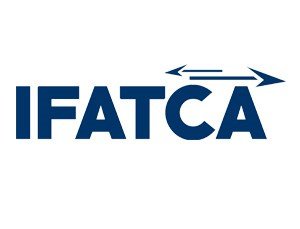Attempts to Discredit Air Traffic Controllers in Lima, Peru is Unjust and Unsafe

Due to the safety critical nature of the work, air traffic control is a profession with high levels of
responsibility. Coordination and communication in air traffic operations shall be precise, effective, and consistent to ensure the prevention of collisions between aircraft, objects, and vehicles. For more than 80 years the Peruvian air traffic controllers have ensured thousands of flights operating under their service reach their destinations safely, orderly, and efficiently by making second-by-second decisions throughout their shifts.
The International Federation of Air Traffic Controllers Associations (IFATCA), representing air traffic controllers in over 130 countries, sends condolences to all those affected by the accident on 18 November 2022 in Lima, Peru. Our executive board understands and respects the need for the relatives of the victims and the public to find explanations and closure. However, this cannot be achieved by punitive actions and misinformation about the cause of this tragedy.
The establishment of a "Just Culture" in aviation has resulted in an exceptionally high safety standard, making accidents exceedingly rare. The industry is committed to continuous improvement, leveraging lessons from incidents or deviations from expected outcomes. Recognizing the inherent risks in aviation, the sector has proactively regulated access to safety data and information, implementing measures like reporter protection within a modern safety management framework. Recordings and their anonymity are protected by ICAO Annexes 13 and 19 and public release of them is a violation of the ICAO Chicago Convention. Embracing a systems approach in incident investigations, focusing on complex system interactions rather than individual blame, is crucial for the ongoing enhancement of aviation safety.
Our colleagues from Jorge Chávez International Airport air traffic control tower are now being subjected to a culpable homicide preliminary investigation. IFATCA denounces this action and the methods the media and others have utilized to try and discredit individual air traffic controllers which were not deemed the cause of the accident.
After the accident, an investigation was carried out by the Aviation Accident Investigation Commission (CIAA) in accordance with Annex 13 of the International Convention on Civil Aviation, as well as by the article 154 of Title XV of the Civil Aeronautics Law of Peru, Law 27261 and the Technical Annex “Investigation of Aviation Accidents and I l parties involved to stick to facts and official findings from the CIAA.
3.2.1 CAUSE1
Collision of the LATAM Aircraft during the takeoff run, against a SSEI-LAP Rescue Vehicle, which
entered the flight runway without having the Express Authorization of the CORPAC Control
Tower, when it was carrying out a Time Taking Exercise. Response from the new Aeronautical
Fire Station of the Jorge Chávez International Airport. This chain of events originated from the lack of joint planning; poor coordination; and the non-use of communication and phraseology standardized by ICAO.
As concluded, the Peruvian air traffic controller colleagues never authorized the entry of the Fire Truck onto the active runway. Recently, an altered video of the air traffic control tower at Jorge Chavez international airport the day of the accident has been disseminated and used as propaganda. These images have been edited, taken out of context and do not align with the timeline of the accident. We strongly condemn the dissemination of the audiovisual materials and urge those responsible for their unauthorized release to be held accountable for their actions.
As is true in many countries across the globe, air navigations services are experiencing a shortage of air traffic controllers which causes fatigue and complicates adequate training for a profession that constantly and consistently seeks to hone and sharpen their skills. IFATCA is consistently advocating that air navigation service providers continually adjust and improve training, education and awareness and seek to fully staffed all air traffic control positions while providing reliable equipment and procedures to the workforce. Peru air traffic services is also in need of more air traffic controllers and evaluating their training means and methods in an effort for constant improvement. We applaud CORPAC for requesting technical assistance from the International Civil Aviation Organization (ICAO) to achieve better preparation training for air traffic controllers. The company believes this will lead to the graduation of new controllers, reducing the personnel deficit.2 While fatigue was not a contributing factor in this accident increasing air traffic controller personnel is vital to mitigate fatigue and ensure system safety.
Air traffic controllers are highly committed, and responsible experts that work diligently and proudly in service to Peru. Therefore, they are the biggest asset for air navigation service which is an economic engine for the country.
The public release of the personal identity of the air traffic controllers on duty the day of the accident, the punitive actions against them and the efforts to publicly discredit them and the profession introduces risk into the aviation system. In the interests of safety, professional air traffic controllers must be able to work free from the stress induced by these uncertain conditions and hardships.
Considering these events, IFATCA strongly urges all parties to uphold the principles of a Just Culture by respecting the privacy and rights of individuals involved. We emphasize the importance of relying solely on official investigation outcomes for accurate information, as speculation and unsupported claims can be detrimental to the integrity of aviation safety. IFATCA remains committed to advocating for the protection of safety information and the fair treatment of aviation professionals, ensuring that the focus remains on enhancing systemic safety and learning from incidents to prevent future occurrences.



.png)

.jpg)



Comments
There are no comments yet for this item
Join the discussion